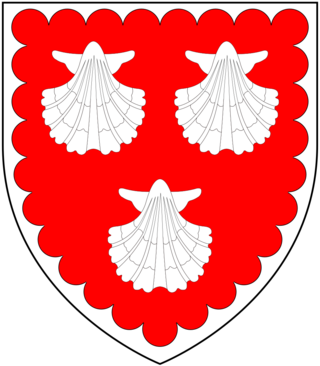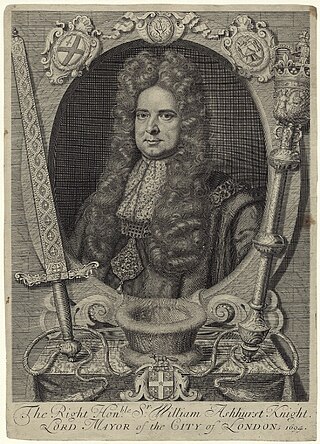
Sir John Child, 1st Baronet was a governor of Bombay, and de facto the first governor-general of the British settlements in India.

Major-General Sir John Malcolm GCB, KLS was a Scottish soldier, diplomat, East India Company administrator, statesman, and historian.

The Bombay Presidency or Bombay Province, also called Bombay and Sind (1843–1936), was an administrative subdivision (province) of British India, with its capital in the city that came up over the seven islands of Bombay. The first mainland territory was acquired in the Konkan region with the Treaty of Bassein (1802). Mahabaleswar was the summer capital.

Sir Gilbert Heathcote, 1st Baronet was an English merchant and Whig politician who sat in the English and British House of Commons between 1701 and 1733. He also served as the governor of the Bank of England and was Lord Mayor of London in 1711.

Lieutenant-General Thomas Wentworth, 1st Earl of Strafford, KG, also known as in Jacobite Peerage as the 1st Duke of Strafford and 3rd Baron Raby from 1695 to 1711, was an English peer, diplomat and statesman who served as First Lord of the Admiralty.

Lieutenant-General Sir James Outram, 1st Baronet was a British general who fought in the Indian Rebellion of 1857.

Sir George Oxenden (1620–1669) was the first governor of the Bombay Presidency during the early rule of the British East India Company in India.

General Thomas Erle PC of Charborough, Dorset, was a general in the English Army and, thereafter, the British Army. He was also a Whig politician who sat in the House of Commons of England and of Great Britain from 1678 to 1718. He was Governor of Portsmouth and a Lieutenant-General of the Ordnance.
Robert Cowan was an Irish colonial administrator and the East India Company's Governor of Bombay from 1729 to 1734. He was a collateral ancestor of the Marquesses of Londonderry through the marriage of his sister, Mary Cowan, to Alexander Stewart, father of Robert Stewart, 1st Marquess of Londonderry.

Sir William Norris, 1st Baronet was an English diplomat and politician who sat in the House of Commons from 1695 to 1701. He was also a servant of the East India Company, and served as ambassador to the Mogul Emperor Aurangzeb. The family name is sometimes spelt Norres or Norreys.
John Richards was a colonial military officer, businessman, politician, and magistrate, best known for his participation in the Salem witch trials in 1692.
John Russell was an administrator of the English East India Company.
Sir Theodore Cracraft Hope, often referred to as T. C. Hope, was a British born civil servant of the Government of India. His duties included Public Works, and he was an active layman of the Anglican Church.
Captain Richard Keigwin was a rebel governor of Bombay in 1683-84 during the East India Company's charter over Bombay. He was never recognized in this position by the Company. He acted as governor of Bombay with the support of the militia, whose salaries had been cut by the Governor, Joshua Child. He was also supported by the population at large who welcomed the withdrawal of trade monopolies during this period.
Bartholomew Harris was an English governor in India. After Sir John Child, 1st Baronet was appointed governor of Bombay in May 1687, Harris assumed the former office of Child as president of the English factory in Surat. After Child's death on 4 February 1690, Harris also assumed the Bombay presidency, even though he chose to stay in Surat, where he died on 10 May 1694. Harris was buried at the English Cemetery north of Surat near the Variav Gate, where his tomb is still to be found. Harris was buried next to his wife Arabella, who had died in 1686 at the age of eighteen. Both their names are inscribed on a stone marker inside the pavilion-like construction on top of their graves.

Sir William Ashhurst was an English banker, merchant and Whig politician who sat in the English and British House of Commons from 1689 to 1710. He also served as the Lord Mayor of London in 1693.
Sir Alexander Anstruther was a Scottish judge in India during the East India Company administration of the Madras and Bombay Presidencies.
Sir John Goldsborough was a sea-captain and administrator of the British East India Company.
Sir James Bateman was an English merchant and politician who sat in the House of Commons from 1711 to 1718. He became Lord Mayor of London and Governor of the Bank of England.








